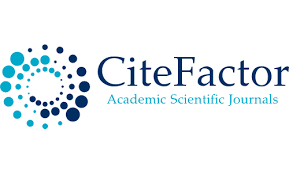Organosilicon Polymer Compositions for Building Materials
Keywords:
Ethyl esters, benzene, chloroform, tetrahydrofuranAbstract
The article presents the synthesis of organosilicon compounds based on tetraethoxylan and industrial by-products, as well as the ratio of reactants, solvents and temperature to the reaction product. Hydrophobic compositions based on synthesized organosilicon polymers were also developed and tests of the building material - concrete - were carried out. As a result, it turned out that the water absorption of concrete is reduced by 40%.
References
Rakhimov F.F. Technology for obtaining polyvinylethinyltriethoxysil based on tetraethoxysilane // Universum: technical sciences: electron. Scientific. Journal. 2021. 10(91). URL: https://7universum.com/ru/tech/archive/item/12347
Rakhimov F.F., Akhmedov V.N., Aminov F.F., Method for producing a hydrophobic compositeUniversum: chemical and biological journal 4 (70) Moscow 2020 63-65 p.
Rakhimov F.F., Akhmedov V.N. Physico-chemical analysis of the conversion of polyvinylethynyltriene into hydroxysilane // ACADEMY: international interdisciplinary research journal. - 2021. - T. 11. –No. 10. – S. 1782-1787.
Rakhimov F.F., Ibodova S.I., Khaidarov A.A. Technology for obtaining organosilicon polymers // Central Asian Journal of Theoretical and Applied Sciences. - 2021. - T. 2. S. 209-212.
Rakhimov F.F., Ibodova S.I., Kholikova G.K. Synthesis of organosilicon polymer based on polyacrylonitrile hydrolyzate//International scientific and practical conferences. - 2021. - P. 1-4.
Aminov F., Rakhimov F., Akhmedov V. Hydrophobic agent based on urea formalin and tetraethoxylan // Zbirnik naukiks prats LÓGOS. - 2020. - P. 69-71.
Rakhimov F.F. Study of magnetic characteristics of a weak ferromagnet FeBO3: Mg // Engineering and technology: ways of innovative development. – 2015. – P. 179-181.
Koldoshevna K. G., Fazlidinovich R. F. Qualitative analysis of aromatic oxide compounds //Образование наука и инновационные идеи в мире. – 2023. – Т. 18. –№. 3. – С. 124-128.
Rakhimov F. F., Sharipov A. A. Chemical Additives for the Production of Plasticized Gypsum //Nexus: Journal of Advances Studies of Engineering Science. –2022. – Т. 1. – №. 4. – С. 7-11. https://innosci.org/JISES/article/view/230/197
Khalimovich M. K., Rakhimov F. F., Akmalov M. G. Study of strength-mechanical and moisture-absorbing properties of building materials based on gypsum, modified by agricultural waste // Universum: technical sciences. – 2022. – №. 10-2 (103). – S. 49-52.
Fazlidinovich R. F. et al. Kremniyorganik polimer kompozitsiya orqali gips nambardoshlilik xossasini oshirish imkoniyatlari // Education, science and innovative ideas in the world. – 2023. – T. 18. – №. 3. – P. 129-133.
Rakhimov F. F. Kimyo fanida mathematician ҳisolashlarning қўllanilishi // Internauka. – 2018. – №. 17. – P. 58-59.
Chemical analysis of Pharaoh R., Gulhayo X. Hydroxinon, and a hydroxychinon-based silicon compound & Involta Scientific Journal. – 2023. – Т. 2. – No. 2. – С. 14-19.
Rakhimov F., Sharipov A., Abdullayev R. Obtaining gypsum with hydrophobic properties based on silicon polymers //AIP Conference Proceedings. – AIP Publishing, 2023. – Т. 2789. – №. 1.
Fazlidinovich R. F., Azimovich S. A. Chemical additives for obtaining plasticized gypsum //Galaxy International Interdisciplinary Research Journal. – 2023. – Т. 11. – №. 7. – С. 29-31.
Rakhimov F. F., Sharipov A. A. Ureaformaldehyde, asosidagi, organosilicon polymer, composition, yordamide, hydrophobe, concrete, olish, technologies // Education, science and innovative ideas in the world. – 2023. – T. 24. – №. 3. – P. 180-184.
Rakhimov F. F., Sharipov A. A. Vinylethinylmagnesium bromide, asosidagi, organosilicon polymer, composition, lardan, foidalanib, hydrophobe, concrete, olish, technology. – 2023. – T. 24. – №. 3. – P. 189-193.
Rakhimov F. F., Sharipov A. A. Chemical additives for building materials based on gypsum // Education science and innovative ideas in the world. – 2023. – T. 24. – №. 3. – P. 185-188.
Downloads
Published
Issue
Section
License

This work is licensed under a Creative Commons Attribution-NonCommercial 4.0 International License.
User Rights
Under the Creative Commons Attribution-NonCommercial 4.0 International (CC-BY-NC), the author (s) and users are free to share (copy, distribute and transmit the contribution).
Rights of Authors
Authors retain the following rights:
1. Copyright and other proprietary rights relating to the article, such as patent rights,
2. the right to use the substance of the article in future works, including lectures and books,
3. the right to reproduce the article for own purposes, provided the copies are not offered for sale,
4. the right to self-archive the article.












